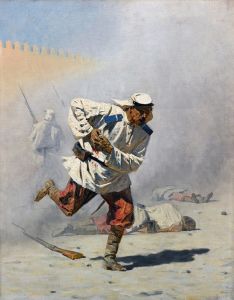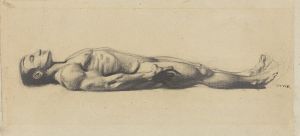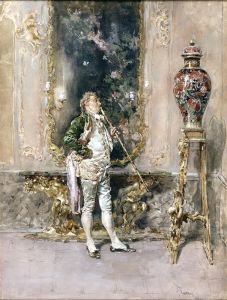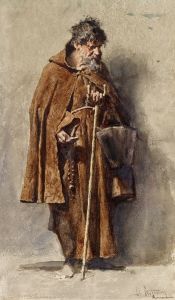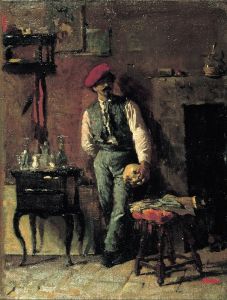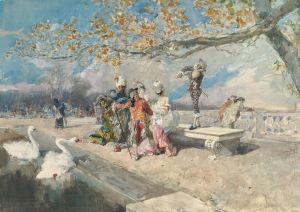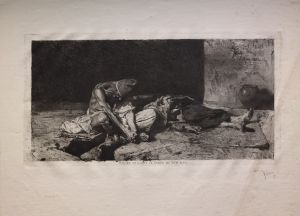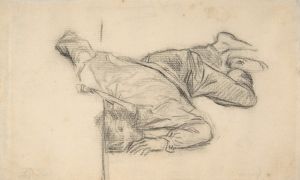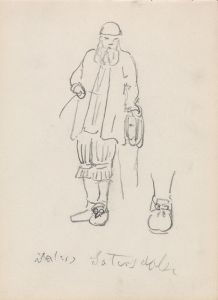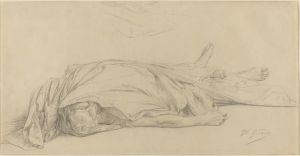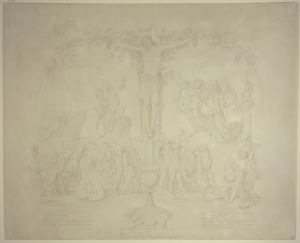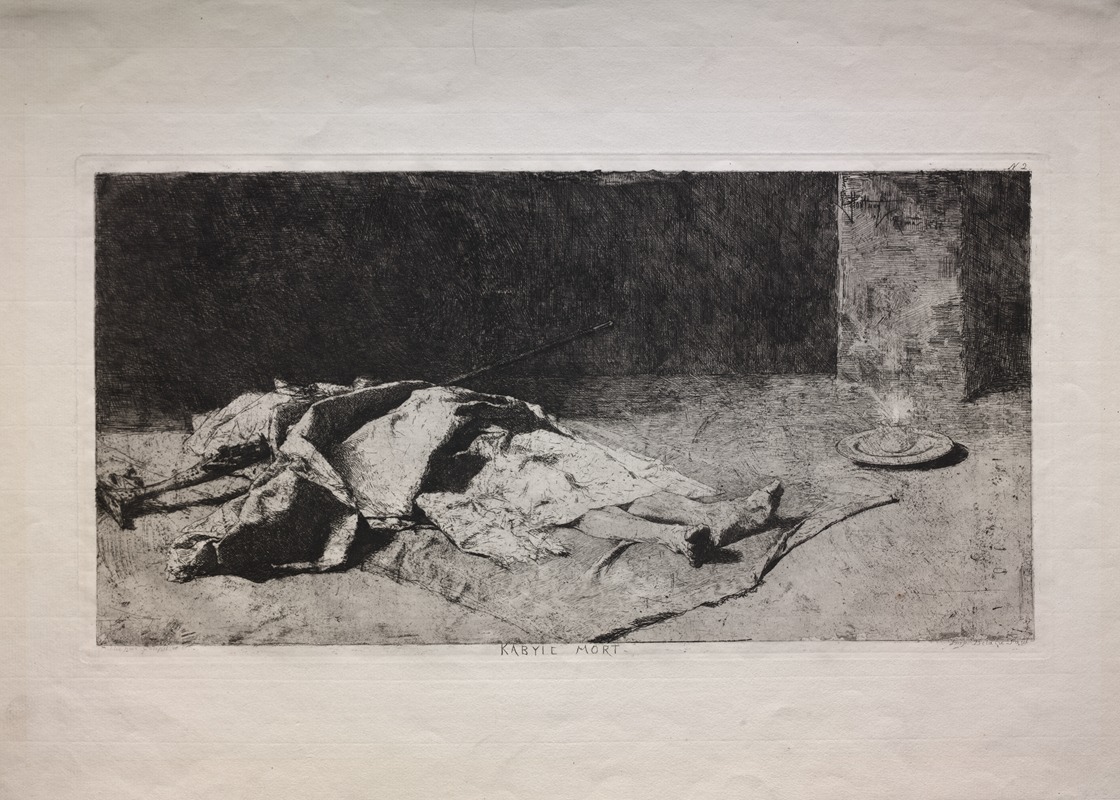
Dead Kabyle
A hand-painted replica of Mariano Fortuny Marsal’s masterpiece Dead Kabyle, meticulously crafted by professional artists to capture the true essence of the original. Each piece is created with museum-quality canvas and rare mineral pigments, carefully painted by experienced artists with delicate brushstrokes and rich, layered colors to perfectly recreate the texture of the original artwork. Unlike machine-printed reproductions, this hand-painted version brings the painting to life, infused with the artist’s emotions and skill in every stroke. Whether for personal collection or home decoration, it instantly elevates the artistic atmosphere of any space.
"Dead Kabyle" is a painting by the Spanish artist Mariano Fortuny Marsal, completed in 1867. Fortuny was a prominent figure in the 19th-century art world, known for his detailed and vibrant works that often depicted historical and Orientalist themes. This particular painting is a significant example of his interest in North African subjects, which he developed after his travels to the region.
Mariano Fortuny Marsal was born in Reus, Catalonia, in 1838. He studied at the Academy of Fine Arts in Barcelona and later moved to Rome, where he became part of a circle of artists who were interested in capturing the exotic and the historical. Fortuny's travels to Morocco in 1860, as part of a Spanish military expedition, deeply influenced his artistic direction. The experience provided him with a wealth of visual material and inspiration, which he would draw upon throughout his career.
"Dead Kabyle" reflects Fortuny's fascination with the people and landscapes of North Africa. The painting depicts a Kabyle warrior, a member of the Berber ethnic group indigenous to the Kabylie region of Algeria. The subject is portrayed lifeless, lying on the ground, which evokes a sense of drama and poignancy. Fortuny's attention to detail is evident in the intricate rendering of the warrior's clothing and weaponry, as well as the surrounding landscape. The use of light and shadow in the painting enhances the emotional impact, highlighting Fortuny's skill in creating atmospheric compositions.
The painting is often noted for its Orientalist perspective, a style that was popular among European artists in the 19th century. Orientalism involved the depiction of Eastern cultures through a Western lens, often romanticizing or exoticizing the subject matter. Fortuny's work, including "Dead Kabyle," is a part of this tradition, capturing the allure and mystery that Western audiences associated with the East. However, Fortuny's approach is also marked by a degree of respect and admiration for his subjects, setting his work apart from some of his contemporaries.
"Dead Kabyle" was well-received in its time and contributed to Fortuny's reputation as a leading artist of his generation. His ability to blend realism with a dramatic flair made his works highly sought after. Fortuny's influence extended beyond his lifetime, impacting later artists who admired his technical prowess and imaginative compositions.
Today, "Dead Kabyle" is considered an important work within Fortuny's oeuvre and is studied for its artistic and historical significance. It exemplifies the cross-cultural encounters of the 19th century and provides insight into the ways in which European artists engaged with and represented other cultures. Fortuny's legacy continues to be celebrated in art history, and his works are held in high esteem in collections around the world.
Mariano Fortuny Marsal's career was tragically cut short when he died at the age of 36 in 1874. Despite his brief life, his contributions to art were substantial, and his works remain influential. "Dead Kabyle" stands as a testament to his talent and his enduring fascination with the world beyond his native Spain.





